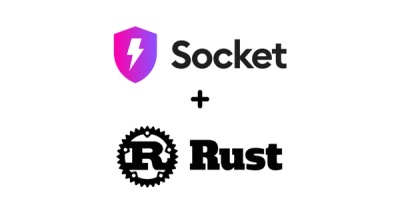
Research
/Security News
Critical Vulnerability in NestJS Devtools: Localhost RCE via Sandbox Escape
A flawed sandbox in @nestjs/devtools-integration lets attackers run code on your machine via CSRF, leading to full Remote Code Execution (RCE).
A completely different kind of tmux session manager.
Introduction <https://github.com/oxidane/tmuxomatic#introduction>__Learn by example <https://github.com/oxidane/tmuxomatic#learn-by-example>__Flex <https://github.com/oxidane/tmuxomatic#flex>__ ... ( i.
Concepts <https://github.com/oxidane/tmuxomatic#flex-concepts>,
ii. Demo #1 <https://github.com/oxidane/tmuxomatic#flex-demonstration-1----create-a-new-windowgram>,
iii. Demo #2 <https://github.com/oxidane/tmuxomatic#flex-demonstration-2----extend-the-windowgram>__
)Installation <https://github.com/oxidane/tmuxomatic#installation>__
... ( i.
Requirements <https://github.com/oxidane/tmuxomatic#installation-requirements>,
ii.
Guide <https://github.com/oxidane/tmuxomatic#installation-guide>,
iii. Optional packages <https://github.com/oxidane/tmuxomatic#optional-packages>__
)Notes on tmux <https://github.com/oxidane/tmuxomatic#notes-on-tmux>__Contributor agreement <https://github.com/oxidane/tmuxomatic#contributor-agreement>__Legal <https://github.com/oxidane/tmuxomatic#legal>__ ... ( i.
Copyright <https://github.com/oxidane/tmuxomatic#copyright>, ii.
License <https://github.com/oxidane/tmuxomatic#license> )Other tmux session managers require pages of documentation for basic use, and define windows as a complicated nesting of pane splits. Instead, tmuxomatic is so easy that anyone could use it after just one example. Yet tmuxomatic is more flexible and more powerful than other tmux session managers.
At the heart of tmuxomatic is the windowgram, a better way of arranging tmux windows. The windowgram is a rectangle comprised of alphanumeric characters (0-9, a-z, A-Z). Each character grouping identifies the name, position, size, and shape of a pane. It should take only one example to demonstrate the power and flexibility of the windowgram.
Compare this window from session_example, with its screenshot from
tmuxomatic session_example:
::
window example_one # A new window begins like this, spaces in names allowed
AAAAAAvvvvvXXXXXTTTT # The windowgram, defines the shapes and positions of panes
jjjQQQQQQQuuuuuuTTTT # Make your own, any size and arrangement, 62 panes maximum
jjjQQQQQQQuuuuuuTTTT
jjjQQQQQQQuuuuuuTTTT
0000llllllllllaaaaaa
1234llllllllllaaaaaa
foc # Only three 3-letter commands: Focus, Directory, Run
dir ~ # Unlinked directory is the default for all undefined panes
A run figlet "A" # Linked command to pane A, in this case prints a large "A"
Q run figlet "Q"
A foc
.. figure:: https://raw.githubusercontent.com/oxidane/tmuxomatic/master/screenshots/screenshot_example.png :alt:
With tmuxomatic, you'll never have to manually split, position, or size a pane again. And linking the panes to actions is so simple and logical that you probably won't forget it. There are no extra file format rules to remember, and typically no command line arguments will be necessary.
For additional features, see the included example sessions. Or for a
list of command line arguments, run tmuxomatic --help.
Windowgrams are a neat way of arranging workspaces. For simpler layouts, a windowgram is typed up quickly. But if you need detail, you may find yourself doing a lot of ASCII art.
In tmuxomatic 2, flex was added to automate the construction and modification of the windowgram itself.
Flex is an object-oriented windowgram editor. It is visually expressive, naturally worded, logically ordered, minimal, and powerful. Its short command set may be combined to make any conceivable windowgram -- likely more quickly and more easily than crafting by hand. Flex is intended for power users who desire detailed windowgrams without the tedium of manual entry.
Flex concepts ^^^^^^^^^^^^^
Before proceeding with the flex demonstration, take a moment to review the following key concepts.
In the demonstrations below, the flex shell is represented by the
flex> prompt. For a detailed list of all flex commands, type
help from the shell at any time.
Flex demonstration #1 -- Create a new windowgram ^^^^^^^^^^^^^^^^^^^^^^^^^^^^^^^^^^^^^^^^^^^^^^^^
Let's use flex to build a windowgram that would otherwise require a lot of typing.
The following windowgram is what we will be creating in this
demonstration. This windowgram is intended for managing cryptocurrency
nodes, specifically bitcoin, litecoin, and namecoin. There are panes for
a general use shell (1), a disk monitor (z); and for each
currency: a title with keep-alive loop on top (B, L, N), and
blockchain information on bottom (b, l, n).
::
1111111111111111111111111zzzzzzzzzzzz
1111111111111111111111111zzzzzzzzzzzz
1111111111111111111111111BBBBLLLLNNNN
1111111111111111111111111BBBBLLLLNNNN
1111111111111111111111111BBBBLLLLNNNN
1111111111111111111111111BBBBLLLLNNNN
1111111111111111111111111bbbbllllnnnn
1111111111111111111111111bbbbllllnnnn
1111111111111111111111111bbbbllllnnnn
1111111111111111111111111bbbbllllnnnn
Begin by opening the flex shell on the session file
session_flexample. Flex will create the session file for you if it
does not already exist.
::
% tmuxomatic session_flexample --flex
flex>
First use the new command to create a new window named wallets.
By default, it will create a single pane window represented by the
single character 1.
::
flex> new wallets
1
From here it takes only four flex commands to complete the envisioned windowgram.
Scale:
To make the window easier to work with, let's scale this windowgram
to 25 characters wide, by 10 characters high. Many flex
parameters are flexible, instead of characters we could have used
multipliers or percentages.
::
flex> scale 25x10
1111111111111111111111111
1111111111111111111111111
1111111111111111111111111
1111111111111111111111111
1111111111111111111111111
1111111111111111111111111
1111111111111111111111111
1111111111111111111111111
1111111111111111111111111
1111111111111111111111111
Add:
Now let's add a new pane on the right edge, and make it 50%
of the size of the base windowgram (or 12 characters, if you
prefer).
::
flex> add right 50%
1111111111111111111111111000000000000
1111111111111111111111111000000000000
1111111111111111111111111000000000000
1111111111111111111111111000000000000
1111111111111111111111111000000000000
1111111111111111111111111000000000000
1111111111111111111111111000000000000
1111111111111111111111111000000000000
1111111111111111111111111000000000000
1111111111111111111111111000000000000
There are only two commands left to complete this, and two ways to do
it. One way uses split and break, the other uses break and
join. We'll use break and join, because split is shown in the next
demonstration.
Break:
So let's break pane 0 into a grid, 3 panes wide by 5
panes high. For readability, we'll make use of the optional parameter so
that new panes to start at A.
::
flex> break 0 3x5 A
1111111111111111111111111AAAABBBBCCCC
1111111111111111111111111AAAABBBBCCCC
1111111111111111111111111DDDDEEEEFFFF
1111111111111111111111111DDDDEEEEFFFF
1111111111111111111111111GGGGHHHHIIII
1111111111111111111111111GGGGHHHHIIII
1111111111111111111111111JJJJKKKKLLLL
1111111111111111111111111JJJJKKKKLLLL
1111111111111111111111111MMMMNNNNOOOO
1111111111111111111111111MMMMNNNNOOOO
Join:
Finally we complete the envisioned layout using just one join
command. Each parameter represents a group of panes to be joined
together. By default, the first pane in the group becomes the joined
name. But we'll be using the optional rename, by appending .
followed by the new pane id.
::
flex> join ABC.z DG.B EH.L FI.N JM.b KN.l LO.n
1111111111111111111111111zzzzzzzzzzzz
1111111111111111111111111zzzzzzzzzzzz
1111111111111111111111111BBBBLLLLNNNN
1111111111111111111111111BBBBLLLLNNNN
1111111111111111111111111BBBBLLLLNNNN
1111111111111111111111111BBBBLLLLNNNN
1111111111111111111111111bbbbllllnnnn
1111111111111111111111111bbbbllllnnnn
1111111111111111111111111bbbbllllnnnn
1111111111111111111111111bbbbllllnnnn
That's it. Our windowgram is ready to use.
Either type done and flex will open this session file in tmux, or
type exit and add some directions to the session file. The
directions specify run commands, home directories, and focus state. For
more information on directions, see the example session at the start of
this readme.
Flex demonstration #2 -- Extend the windowgram ^^^^^^^^^^^^^^^^^^^^^^^^^^^^^^^^^^^^^^^^^^^^^^
For this demonstration, we modify the windowgram from the previous demonstration, using a different set of flex commands. The commands in this section are described in summary form.
Open the windowgram that we created in the above demonstration
::
flex> use wallets
1111111111111111111111111zzzzzzzzzzzz
1111111111111111111111111zzzzzzzzzzzz
1111111111111111111111111BBBBLLLLNNNN
1111111111111111111111111BBBBLLLLNNNN
1111111111111111111111111BBBBLLLLNNNN
1111111111111111111111111BBBBLLLLNNNN
1111111111111111111111111bbbbllllnnnn
1111111111111111111111111bbbbllllnnnn
1111111111111111111111111bbbbllllnnnn
1111111111111111111111111bbbbllllnnnn
Split:
Split pane ``1``, along ``bottom``, exactly ``3`` characters, name
the new pane ``s``
::
flex> split 1 bottom 3 s
1111111111111111111111111zzzzzzzzzzzz
1111111111111111111111111zzzzzzzzzzzz
1111111111111111111111111BBBBLLLLNNNN
1111111111111111111111111BBBBLLLLNNNN
1111111111111111111111111BBBBLLLLNNNN
1111111111111111111111111BBBBLLLLNNNN
1111111111111111111111111bbbbllllnnnn
sssssssssssssssssssssssssbbbbllllnnnn
sssssssssssssssssssssssssbbbbllllnnnn
sssssssssssssssssssssssssbbbbllllnnnn
Rename:
Rename the panes ``N`` and ``n``, to ``D`` and ``d`` respectively
::
flex> rename Nn Dd
1111111111111111111111111zzzzzzzzzzzz
1111111111111111111111111zzzzzzzzzzzz
1111111111111111111111111BBBBLLLLDDDD
1111111111111111111111111BBBBLLLLDDDD
1111111111111111111111111BBBBLLLLDDDD
1111111111111111111111111BBBBLLLLDDDD
1111111111111111111111111bbbblllldddd
sssssssssssssssssssssssssbbbblllldddd
sssssssssssssssssssssssssbbbblllldddd
sssssssssssssssssssssssssbbbblllldddd
Swap:
Swap pane ``z`` with ``s``, also swap panes ``Ll`` with ``Dd``.
::
flex> swap z s Ll Dd
1111111111111111111111111ssssssssssss
1111111111111111111111111ssssssssssss
1111111111111111111111111BBBBDDDDLLLL
1111111111111111111111111BBBBDDDDLLLL
1111111111111111111111111BBBBDDDDLLLL
1111111111111111111111111BBBBDDDDLLLL
1111111111111111111111111bbbbddddllll
zzzzzzzzzzzzzzzzzzzzzzzzzbbbbddddllll
zzzzzzzzzzzzzzzzzzzzzzzzzbbbbddddllll
zzzzzzzzzzzzzzzzzzzzzzzzzbbbbddddllll
Drag:
Drag the ``left`` edge of group ``BDLbdl``, to the ``left``, about
``50%`` of the available space.
::
flex> drag left BDLbdl left 50%
1111111111111ssssssssssssssssssssssss
1111111111111ssssssssssssssssssssssss
1111111111111BBBBBBBBDDDDDDDDLLLLLLLL
1111111111111BBBBBBBBDDDDDDDDLLLLLLLL
1111111111111BBBBBBBBDDDDDDDDLLLLLLLL
1111111111111BBBBBBBBDDDDDDDDLLLLLLLL
1111111111111bbbbbbbbddddddddllllllll
zzzzzzzzzzzzzbbbbbbbbddddddddllllllll
zzzzzzzzzzzzzbbbbbbbbddddddddllllllll
zzzzzzzzzzzzzbbbbbbbbddddddddllllllll
Insert:
Insert to the ``left`` of pane ``s`` (scaling group ``BDLbdl``), a
pane ``6`` characters wide.
::
flex> insert left s:BDLbdl 6
1111111111111000000ssssssssssssssssssssssss
1111111111111000000ssssssssssssssssssssssss
1111111111111BBBBBBBBBBDDDDDDDDDDLLLLLLLLLL
1111111111111BBBBBBBBBBDDDDDDDDDDLLLLLLLLLL
1111111111111BBBBBBBBBBDDDDDDDDDDLLLLLLLLLL
1111111111111BBBBBBBBBBDDDDDDDDDDLLLLLLLLLL
1111111111111bbbbbbbbbbddddddddddllllllllll
zzzzzzzzzzzzzbbbbbbbbbbddddddddddllllllllll
zzzzzzzzzzzzzbbbbbbbbbbddddddddddllllllllll
zzzzzzzzzzzzzbbbbbbbbbbddddddddddllllllllll
Clone:
Delete:
Mirror:
Flip:
Rotate:
Flex is in development, these commands will be added in 2.x
Installation Requirements ^^^^^^^^^^^^^^^^^^^^^^^^^
This application requires the following:
Python 3 <http://www.python.org/getit/>__ +tmux 1.8 <http://tmux.sourceforge.net/>__ +Installation Guide ^^^^^^^^^^^^^^^^^^
There are three ways to install tmuxomatic, in order of convenience:
Automatically (pip)
rm -rf /tmp/pip-build-root/pip-python3 install tmuxomatic --upgradeManually (python)
cd tmuxomaticpython3 setup.py installFrom Development (git)
pandoc 1.12 <http://johnmacfarlane.net/pandoc/>__ +git clone git://github.com/oxidane/tmuxomatic.gitcd tmuxomaticpandoc -f markdown -t rst README.md -o README.rstpython3 setup.py installVerify that the version reported by tmuxomatic -V matches the latest
release. |image1|
Optional Packages ^^^^^^^^^^^^^^^^^
The following packages are optional; install if you want the additional features.
pip-python3 install pyyaml ... YAML session file supportTo use tmuxomatic, you don't have to know everything about how to use tmux <http://net.tutsplus.com/tutorials/tools-and-tips/intro-to-tmux/>,
but the knowledge is useful for customizing the tmux status bar <http://me.veekun.com/blog/2012/03/21/tmux-is-sweet-as-heck/>, or
changing the default key bindings <https://wiki.archlinux.org/index.php/tmux#Key_bindings>__.
These are tmux user preferences, and typically placed in a personal
.tmux.conf file.
Contributions must be comprised of original source, and/or properly attributed public domain source. By submitting, you agree that your contribution will inherit the current copyright and license, and will be subject to future changes in tmuxomatic and any officially-related projects.
By downloading, copying, installing or using the software you agree to the license. If you do not agree to the license, do not download, copy, install, or use the software.
Copyright ^^^^^^^^^
Copyright 2013-2015, Oxidane. All rights reserved.
License ^^^^^^^
The windowgram module is presently not licensed for use outside the
tmuxomatic project. For more information, including future plans for an
open source license, please see the file windowgram.py.
The tmuxomatic source is distributed under the BSD 3-Clause License <http://opensource.org/licenses/BSD-3-Clause>__. The copyright
and license must be included with any use, modification, or
redistribution. See the license for details.
.. |image0| image:: http://img.shields.io/pypi/v/tmuxomatic.svg?style=flat :target: https://pypi.python.org/pypi/tmuxomatic .. |image1| image:: http://img.shields.io/pypi/v/tmuxomatic.svg?style=flat :target: https://pypi.python.org/pypi/tmuxomatic
FAQs
Intelligent tmux session management ... #tmux
We found that tmuxomatic demonstrated a healthy version release cadence and project activity because the last version was released less than a year ago. It has 1 open source maintainer collaborating on the project.
Did you know?

Socket for GitHub automatically highlights issues in each pull request and monitors the health of all your open source dependencies. Discover the contents of your packages and block harmful activity before you install or update your dependencies.

Research
/Security News
A flawed sandbox in @nestjs/devtools-integration lets attackers run code on your machine via CSRF, leading to full Remote Code Execution (RCE).

Product
Customize license detection with Socket’s new license overlays: gain control, reduce noise, and handle edge cases with precision.

Product
Socket now supports Rust and Cargo, offering package search for all users and experimental SBOM generation for enterprise projects.